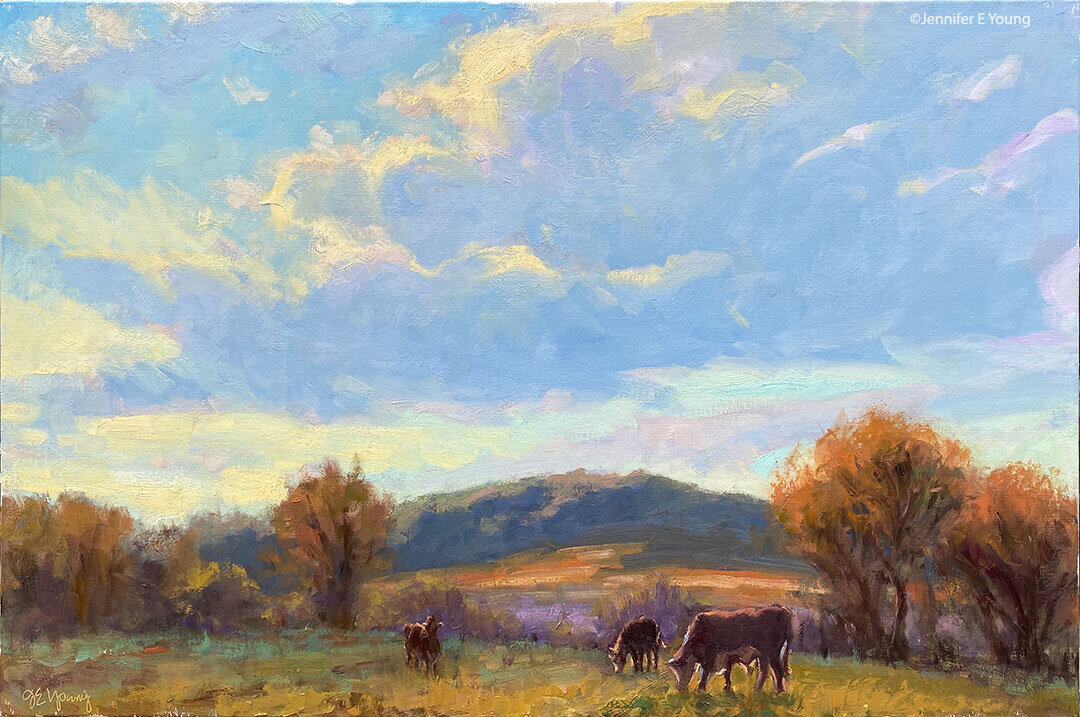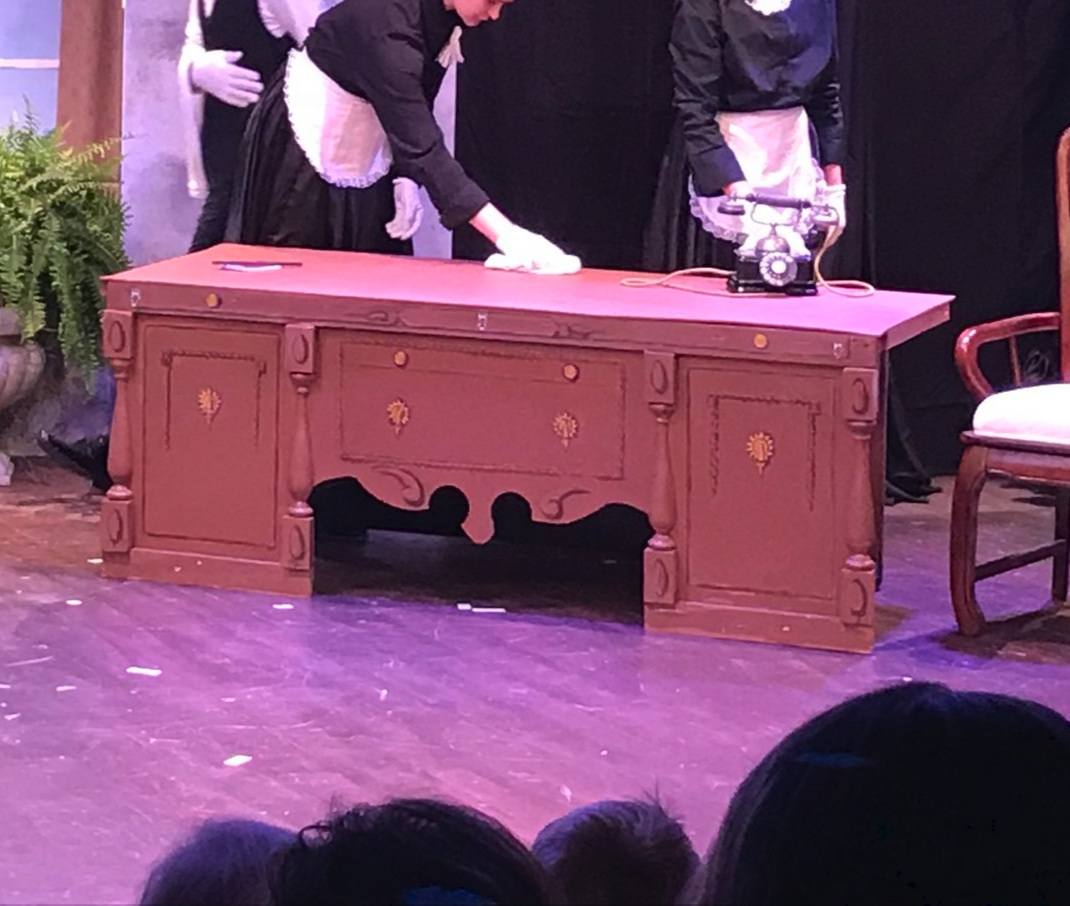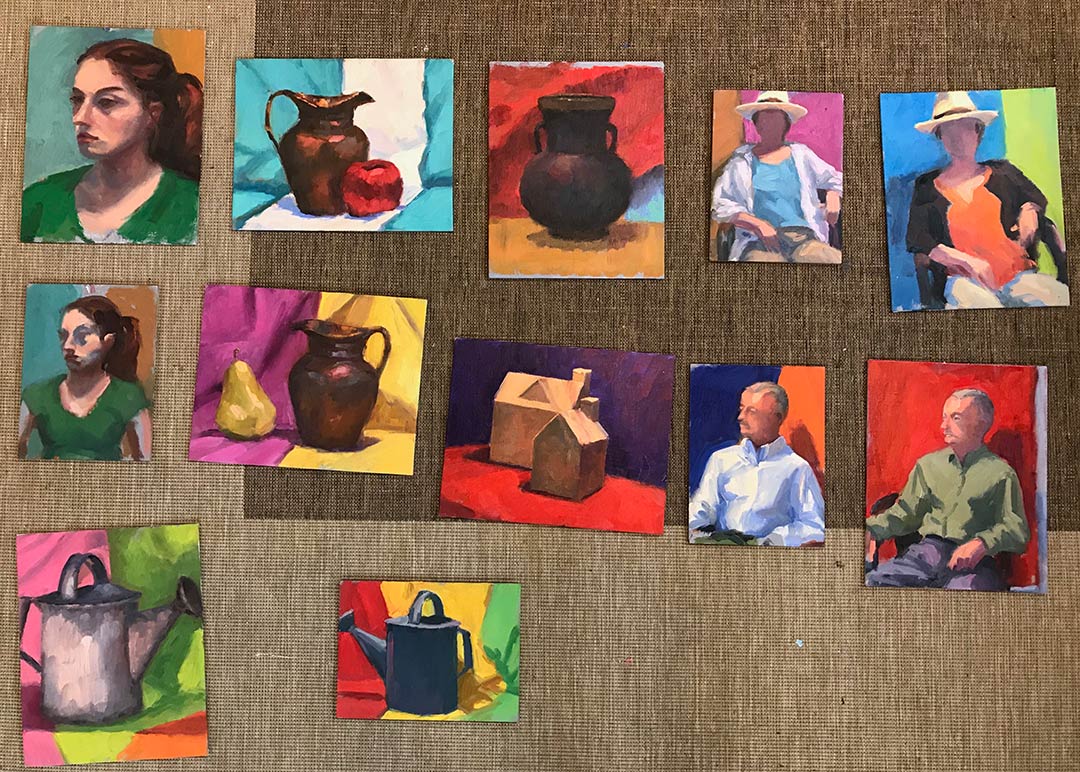You'd have to live under a rock not to know that economic anxiety is rampant these days. And it looks like what's going down on Wall Street won't leave too many sectors of the economny untouched, including (especially?) those in the arts community. In fact, when the economy and the housing market suffers, the retail outlets and galleries usually follow, and many artists feel the crunch. In my own career I've noticed a slow down for some time. Thankfully my art business hasn't come to a screeching halt, but times are different now than they used to be. And while I realize that there are ebbs and flows in any business, it's easy to look at the news and wonder just how long this current "ebb" will last. As artists, there is a lot we can do other than wring our hands in worry. On the practical side, we can start by taking a good look at our expenditures, and by streamlining and simplifying, and taking new approaches to creative marketing. It's a positive approach, but it's harder for some people than for others. I, for one, am downsizing by moving my studio. And while this move is also a positive one, it took me a while to feel like it wasn't one of defeat or loss.
Don't get me wrong, I am very grateful and excited about my upcoming new home studio. But fora while during the lead-up to this decision, I had a lot of angst that in doing so, I was somehow retreating. In essence there was a big part of me that felt like I failed. It felt like I was a failure at my business, but the psychological trickle- down effect was that I had also somehow failed as an artist too.
After all, it was a mere two years ago that I had my shiny new gallery grand opening, and here I am packing it up again. Perhaps I didn't do enough advertising? Perhaps it wasn't the right location? Or perhaps I just didn't allow myself enough time to get established a the location I was in? On the business side there were many "perhapses". But on the artistic side I also found myself questioning something much more personal. Perhaps the real reason was that I just wasn't a very good artist. Who am I to think I can make a career out of my art? Who do I think I am? I am the worst artist on the planet.
And so, in spite of all the good that I know is inherent in this move, it hasn't been without a good deal of internal struggle. Logically I know that there are many reasons for the change I'm making, and that the move is more aligned with who I am and who I want to become. Logically I know also that while financially I was not becoming the next Warren Buffett, I was able to pay my bills from my art business, and could foresee no immediate reason why I couldn't continue to do so. And logically I also know that while I can always, always improve my skills, I am probably not the "worst artist on the planet" either. But perhaps the best bit of logic was something my friend Robin said to me over lunch when I was in the throes of my angst-filled decision making process:
"Don't be a prisoner of your pride. Sometimes what appears to be backwardmovement is actually the way forward. Do what's right for you."
Of course, I believe she was right. And as I observe all of this financial uncertainty on the world stage, I do think that this move will help me to better weather the storm.
But in addition to physically streamlining my work environment, I've also come to another realization. Works of quality withstand even the harshest times. Artist Robert Genn has made this very point in his most recent post on his inspirational site for artists, The Painter's Keys:
"Recessions are blessings. Historically, recessions and depressions have been times when "important" work gets made. Realistically, our financial outlay for equipment and art materials (unless your medium is gold) is relatively minor. In hard times artists need to get themselves as debt free as possible and invest in the joy of their vision."
Haven't you noticed that even in the toughest of times there are still those who thrive? And its the artists who have made the wise investments in their craft, their vision, and their voice who set themselves apart in the good times and especially in the bad. So while there's nothing I can do about what's unfolding on Wall Street, I can take advantage of the relative quiet in the art market by focusing even harder on my own craft and vision. Now is the time to experiment and to learn anew, and maybe even come out of all of this as a better artist than I would have been otherwise.


















